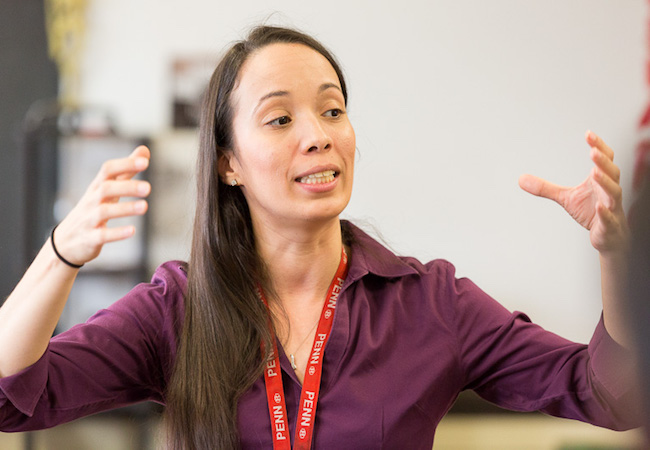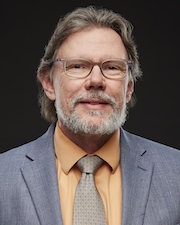Feeling stuck? Try planning for uncertainty
October 13, 2020
For many educators, this will be the most important year of their careers—and also the most trying.
The cycling between in-person, hybrid, and online instruction; the Zoom fatigue; the technological breakdowns; the health risks: all of it has left teachers feeling anxious, upset, fatigued, and stuck.
Michael Nakkula, Chair of the Human Development and Quantitative Methods Division and Co-Founder and Faculty Director of the Project for Mental Health and Optimal Development (PMHOD) at Penn GSE, and Andy Danilchick, Co-Founder and Director of PMHOD, have developed ways to lean in to the uncertainties of the COVID-19 era.
In their new guide, Nakkula and Danilchick say educators should cultivate what they call an “uncertainty mindset,” a disposition that encourages embracing the unknown to remain responsive to needs and opportunities as they emerge. The guide, created by a team of teachers and mental health counselors, includes resources and tools to help educators recognize challenges, make plans, and care for the wellness needs of themselves and their students.
The team’s framework for embracing uncertainty and focusing on elements in one’s control centers on three areas: engaging in dialogue with colleagues, students, and families; considering classroom and school climate; and identifying equity concerns.
Dialogue with Stakeholders
By widening the problem-solving network, educators can expand their support system, become more aware of resources, and coordinate with those best positioned to take action. Establishing ongoing communication between teachers, counselors, support staff, and families is essential. Students should also be considered crucial partners in this work.
Key questions to ask:
- Who are the relevant stakeholders?
- How can I work with stakeholders to develop a responsive action plan?
In practice, this can look like:
- letting students co-construct assignments that relate to what they are experiencing
- consulting with the school nurse, or inviting them to give a lesson, to connect course material to COVID-19 (e.g., math or science lessons about viral spread; social studies lessons about the health care system)
- asking the school counselor for resources to incorporate social-emotional learning (SEL) into lessons
Consider Climate
“We must look critically at the environment we have created and consider how our classroom and school climates support, or hinder, students’ needs and strengths,” says Danilchick. This assessment includes both how educators establish trust and connections with students, and how classroom norms may adversely affect some students. Notes Nakkula, “We must also consider what potential barriers are in place for students as a result of neglect, oversight, or unjust practices within the school and larger systems.”
Key questions to ask:
- How can I make my classroom (in-person or online) a safe and supportive space?
- How does the larger school climate, including school-wide policies and practices, impact the situation?
- How have larger societal issues, including the COVID-19 crisis, affected this situation?
In practice, this can look like:
- incorporating classroom practices like mindfulness and journaling, to help students manage anxiety caused or exacerbated by the pandemic
- ensuring classroom policies for attendance and coursework do not penalize students for home circumstances like technology/connectivity access or care responsibilities for siblings
Apply an Equity Lens
At a time when students and families face vastly divergent challenges in adjusting to COVID-19-era learning environments, educators must actively consider race, ethnicity, gender identity, socioeconomic status (SES), neurodiversity, religion, sexual orientation, physical ability, and other salient aspects of their own and students’ identities. Such a lens helps educators fully see their students—both what makes them who they are and the inequities and privileges that may exist for them because of those identities.
For educators looking for support doing this work, Nakkula and Danilchick recommend using Pamela Hays’s ADDRESSING model as a starting point for evaluating positionality and implicit biases.
Key questions to ask:
- How does my sociocultural identity influence how I am viewing and responding to this student/situation?
- How do my students’ sociocultural identities influence how they are viewing and responding to this situation?
In practice, this can look like:
- questioning if you react more harshly to certain behaviors, like lack of assignment completion or rowdiness, differently depending on the race or gender of the student—and working to shift those dynamics
- addressing inequities that may exist among students, such as between those who do and do not have caregivers at home during virtual schooling; teachers can help individual students set up routines and reminders for themselves that others’ parents may be providing
Using this mindset and set of questions, educators can develop and deepen relationships with students and other stakeholders, so as to make better decisions about students’ needs and their own wellness.
Danilchick emphasizes, though, that we should look beyond mere maintenance of mental health; it is also crucial to think about optimal development—the unique pathways to mental wellness and fulfillment that individuals envision for themselves—despite the sub-optimal conditions of the COVID-19 era.
“Kids want to engage in the world. To do so, they need to feel challenged and inspired,” he says. “Amid this crisis, creating learning environments that promote opportunities for supportive academic, emotional, and social exploration is not a luxury,” adds Nakkula. “It is the way through it.”
The Planning for Uncertainty Guide was funded by The Harold W. McGraw, Jr. Family Foundation, a not-for-profit private foundation focused on supporting education, youth services, community health, and medical research. Julie Berger, Miranda Rain Wenhold, and Debora Broderick contributed to this piece.


